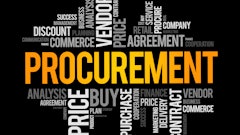
As consumers have increasingly shifted their spending from in-store to online, most retailers have experienced a rise in returns, causing significant issues for the processing capability of many supply chains.
To cope with the cost of managing returns, some retailers are starting to charge consumer fees for returning orders. By doing so, these companies are taking a financial gamble that the revenue from return fees will compensate for the inevitable reduction in sales as consumers seek to purchase from non-fee charging retailers.
Before rushing to the conclusion that returns fees could represent an additional revenue stream, retailers need to develop a deep understanding as to why consumers return products in the first place and the root causes of those reasons.
Why Returns Happen and Fee Scenarios
There are a number of reasons why consumers return their purchased products. These can include the product quality or color not being as expected, the item arriving damaged or later than expected, the wrong item being delivered or whether the consumer deliberately ordered more than they intended to keep. While not every retail sector will experience the same types of reasons for returns, across sectors, we find the most common reasons are due to events within direct or indirect control of retailers.
Ultimately, a return is a failed sale for a retailer, and more often than not, a disappointing experience for the consumer. Retailers that apply a returns fee regardless as to why the return is occurring are in danger of further disappointing, and perhaps forever losing their already disappointed consumers.
The industry typically segregates their view of returns, as whether purchased in-store or on-line or returned to a store, a parcel shop or via mail to the retailer’s warehouse network.
However, when determining when to charge consumers for returning orders, retailers must understand a new segregation - whether the return was premeditated by the consumer at the point of purchase or not. Disappointed consumers are most likely not to have pre-meditated making a return and need to be treated differently than those that did.
Understanding the difference in the consumer’s pre-purchase mindset, requires the ability to analyze each consumer’s cart to assess if the contents would indicate a premeditated intention to return some of the order.
For a returns charging model to be fair to consumers, it must look to separate premeditated returns from non-premeditated, with fees only being applicable to the former. The most obvious clue would be where multiple sizes of the same product, or multiple sizes of more than one product are being ordered at once. Retailers should cross-reference against historical patterns, looking for similar ordering patterns that generated returns. If history indicated a high probability of a future return, then it would be justifiable to alert the consumer during the ordering process that a charge for returning will be applied.
Consumers ordering multiple colors of the same size should also be informed of a return charge, although in this situation, it’s less certain that products may be returned. While this is a tailored approach to reduce the cost of returns to the retailer, the long-term aim must be to improve sizing information so that the consumer can have greater information for making a more accurate choice regarding their required size.
Non-premeditated returns are likely to be those where consumers only order one product, or where the products in the order have no direct substitutability. Examples include a power tool and some drill bits or products with little or no co-relationship. In these cases, retailers would be wise to offer return options at no charge to the consumer.
Evaluating the Risk in Charging Consumers for Returning Orders
Many retailers are leaning into charging consumers for returning their orders as a means of reducing the cost of managing their returns operation. However, this approach is fraught with risks, as the majority of consumers do not want to pay, and retailers know the introduction of returns charges will drive the loss of some level of consumer spend.
Retailers are effectively taking a financial gamble that the lost sales revenue from losing consumers will be covered by the additional revenue coming from the remaining consumers that will pay to return their products. From reviewing the policy wording used by most retailers that have introduced return fees, they state that fees are applicable according to the return method to be used, such as free if returned to store, but not by mail or parcel shop, rather than by premeditated or not.
This can leave consumers uncertain and frustrated that they may perceive the need to pay a fee to return, for example, an item sent in error, an order that arrived too late to be useful, or a product whose quality was less than expected. In these scenarios where it’s highly likely the consumer intended to keep these products, charging a fee to return could have longer-term repercussions, such as the consumer shifting future purchasing to a competitor. Beyond charging return fees, there are other actions retailers should consider as part of their return management strategy.
Don’t Overlook Return Fundamentals and Recommerce Opportunities
The very best retailers achieve returns management excellence by not just focusing on how to process returns faster, but how to address the root causes so as to prevent the need for the consumer to make a return in the first place. They are increasingly active in preventing returns by developing a deep understanding of why consumers return, and where they, as retailers, operate and behave in ways that actually create reasons for consumers to return items.
In order to rebalance the focus on managing returns, from processing them more efficiently to preventing their occurrence, retailers need to put in place clear ownership for returns management and reverse logistics. Based on our conversations with clients throughout the year, it appears the role of Head of Returns Management has yet to be formalized in a majority of organizations, despite retailers struggling with a significant increase in customer returns, year over year.
They also need to establish an operational framework that allows for continued improvement in these operational areas. A great reverse logistics supply chain can be a valuable profit contributor to a retail company through its ability to optimize the resale of returned merchandise at full price. However, not all products can be resold this way and an increasing band of consumers are motivated to purchase preowned rather than new products. Retailers that excel at processing the return of new merchandise can utilize the same reverse logistics capabilities for processing preowned products, too.
The fashion retail industry, most notably fast fashion, is increasingly being recognized as a significant contributor to greenhouse gas emissions and unwanted products ending up in landfill sites. While awareness of these facts were once limited to sustainability specialists, end consumers are now increasingly concerned about the environmental impact and adjusting their behaviors accordingly.
This has compelled fashion retailers in particular to introduce initiatives to appeal to the growing band of conscious consumers such as:
- Buy Back for Resale — Retailers pay or credit consumers for used products they give back and they are resold on the retailer’s own website or on a marketplace website.
- Take Back — Retailers take back used products from your consumers (but do not pay the consumers) and you resell them as used on either a website you own or on a marketplace website.
- Recycling Scheme — That is, you take back used products from your consumers (but do not pay the consumers) for recycling or downcycling to a third party for deconstruction. Retailers need to act responsibly in these areas to ensure that the products they take back don’t subsequently end up in landfill in developing countries, as is frequently the case today.
Through reverse logistics, retailers can offer used products through internal or external resale channels. Embrace recycling opportunities for unsaleable products, offering a service to take back unwanted used products from consumers.
A Balanced Approach for Long-term Success
In today’s competitive marketplace, retailers cannot accept high returns rates as simply a cost of doing business nor blanketly begin charging fees when consumers return orders. By understanding why returns are happening and taking responsibility for volumes, retailers can put in place corrective actions that address the impact returns have on retail’s traditional linear, go-to-market-oriented supply chain, without jeopardizing the needs and preferences of their customers.

























